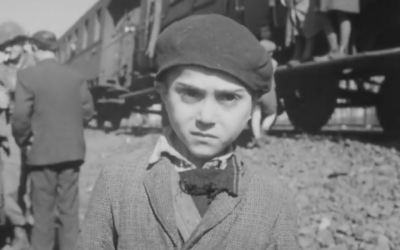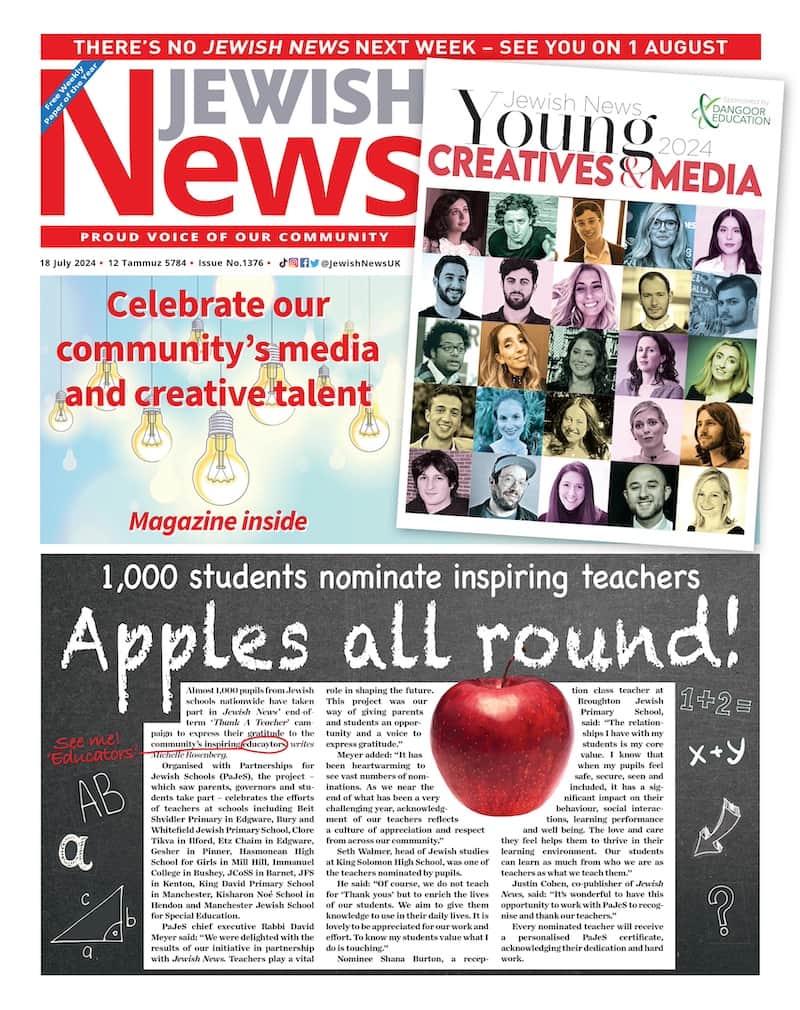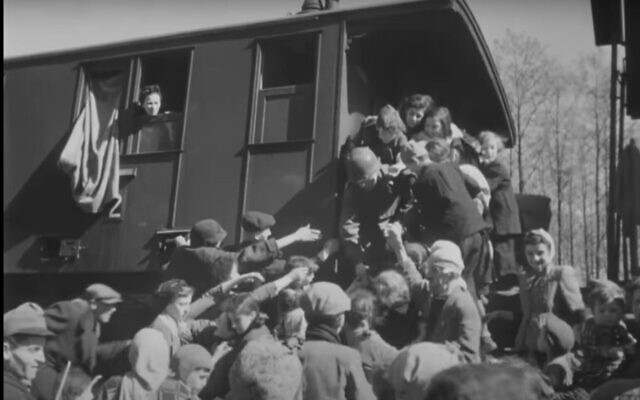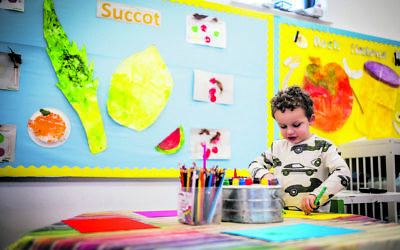Imperial War Museum’s verdict on unearthed Holocaust footage from April 1945
EXCLUSIVE: The film, revealed last week by the National Archives in the United States, shows three cattle car trains, each with 2,500 survivors on board, bound for Theresienstadt.
The Imperial War Museum has hailed newly-unearthed Holocaust footage from April 1945 showing Jews liberated from a train bound for Theresienstadt for shedding fresh light on the final days of Nazi terror.
The two minutes of black and white film, revealed last week by the National Archives in the United States, shows three cattle car trains, each with 2,500 survivors on board, heading from Bergen-Belsen to Theresienstadt on 7 April 1945. The prisoners, called Austauschjuden (“exchange Jews”), had been selected because the SS thought they could be swapped for German prisoners of war.
After six days of travel, in horrifying conditions, the train stopped outside the village of Farsleben, 80 miles west of Berlin, where it was liberated by American soldiers.
The footage shows some prisoners looking malnourished and wearing bandages, many sitting or lying motionless.
James Bulgin, head of public history at the Imperial War Museum, told Jewish News: “This footage is amazing in terms of what it shines a light on. It’s powerful to go from being fixed photographic images to suddenly seeing moving images that join the gaps.”

He said the film will allow historians to challenge misconceptions about the nature of liberation at the end of the Nazi era: “Liberation took many forms at the end of the Holocaust, but the popular perception of it has been dominated by a relatively limited volume of content that focuses on specific places, predominantly Bergen Belsen.
“Ironically, that’s where this train had come from, but also places like Mauthausen and Dachau. Hopefully this footage will start to change these perceptions and show how diverse liberation was for Europe’s Jews.”
This footage is amazing in terms of what it shines a light on. It’s powerful to go from being fixed photographic images to suddenly seeing moving images that join the gaps.
For Bulgin, one of the most powerful aspects of the film is that it “focuses on the Jewish experience of liberation”. He adds: “It’s not filmed from over the shoulders of liberating armies, showing the soldiers as valiant and glorious. It’s just focused on the individuals. In the image of the small boy staring at the camera you get a sense of the unspoken horror. You look at him and think,‘What have those eyes seen?’ Surely far more than a child of that age ever, ever should have.”
Bulgin added that “there’s still this sort of broader perception in the public at large that the Nazis, as soon as the war broke out, somehow got a hold of every Jew in Europe and threw them into a concentration camp where they were all kind of somehow systematically murdered. And I think the problem with that is, it is obviously, completely wrong.
“But also it denies quite how much individual action was involved. Because for something like this to really happen, it needs the active participation of tens of thousands of other people, knowingly, willingly, actively participating, and the idea that there’s slightly more consideration or forethought, to me really sharpens how horrific it all was. If we just indulged that it was this massive, faceless thing that happened, somehow of its own volition, it doesn’t acknowledge that sufficiently. And there’s something about the idea that they’ve made a decision about exchanging and selling Jewish people in this camp.”
Karen Pollock, chief executive of the Holocaust Educational Trust, said: “This footage is nothing short of remarkable. This is the first time we’ve been able to see on film the people swept up in these extraordinary events – the liberation of one of the so called ‘death trains’ from Bergen-Belsen.
“This footage brings to life this history, reminding us to look beyond the nameless, faceless statistics of the past and to remember the Jewish men, women and children persecuted, imprisoned and murdered by the Nazis. Through this film we have a window on to a pivotal moment in history and are able to be witnesses to a past that is rapidly fading.”

Thank you for helping to make Jewish News the leading source of news and opinion for the UK Jewish community. Today we're asking for your invaluable help to continue putting our community first in everything we do.
For as little as £5 a month you can help sustain the vital work we do in celebrating and standing up for Jewish life in Britain.
Jewish News holds our community together and keeps us connected. Like a synagogue, it’s where people turn to feel part of something bigger. It also proudly shows the rest of Britain the vibrancy and rich culture of modern Jewish life.
You can make a quick and easy one-off or monthly contribution of £5, £10, £20 or any other sum you’re comfortable with.
100% of your donation will help us continue celebrating our community, in all its dynamic diversity...
Engaging
Being a community platform means so much more than producing a newspaper and website. One of our proudest roles is media partnering with our invaluable charities to amplify the outstanding work they do to help us all.
Celebrating
There’s no shortage of oys in the world but Jewish News takes every opportunity to celebrate the joys too, through projects like Night of Heroes, 40 Under 40 and other compelling countdowns that make the community kvell with pride.
Pioneering
In the first collaboration between media outlets from different faiths, Jewish News worked with British Muslim TV and Church Times to produce a list of young activists leading the way on interfaith understanding.
Campaigning
Royal Mail issued a stamp honouring Holocaust hero Sir Nicholas Winton after a Jewish News campaign attracted more than 100,000 backers. Jewish Newsalso produces special editions of the paper highlighting pressing issues including mental health and Holocaust remembrance.
Easy access
In an age when news is readily accessible, Jewish News provides high-quality content free online and offline, removing any financial barriers to connecting people.
Voice of our community to wider society
The Jewish News team regularly appears on TV, radio and on the pages of the national press to comment on stories about the Jewish community. Easy access to the paper on the streets of London also means Jewish News provides an invaluable window into the community for the country at large.
We hope you agree all this is worth preserving.






















